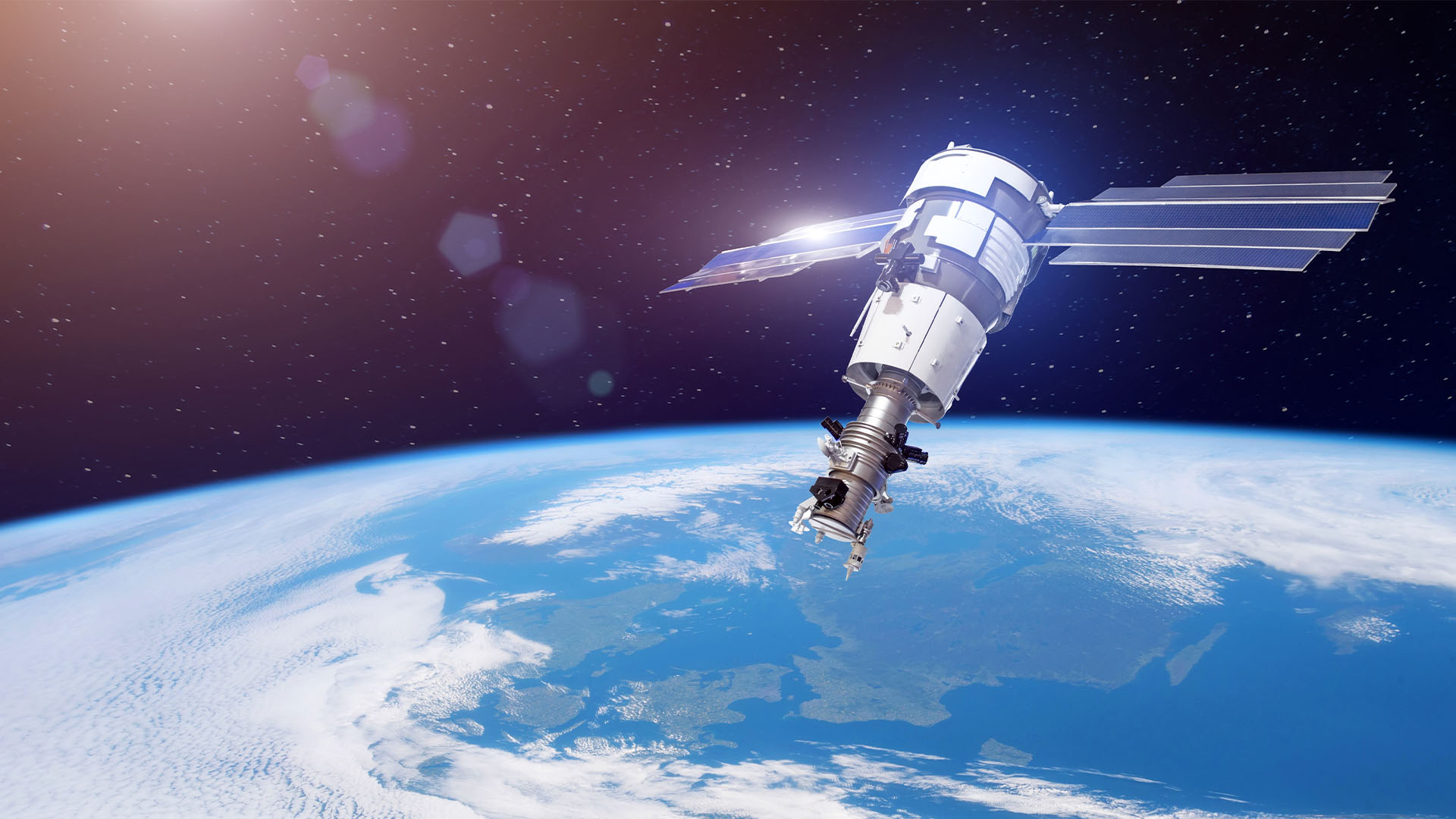This article was co-authored with Joel McKay.
For decades, space activity has captured our collective imagination but the reality of space commercialisation has shunned the spotlight. Historically, space activities were the exclusive domain of government funded projects. However, technological advancements and innovation by the telecommunications industry have facilitated market entry by a growing number of private participants, with prominent players including SpaceX and Blue Origin. Currently, the main commercial space activities involve the use of satellites across a wide arrange of industries including television, telecommunications, internet broadband services, military, navigation and surveillance.
Given the broad application for satellite technology, governments are increasingly looking to expand their technological capabilities and invest in space projects. Current estimates indicate that state actors remain the main driver of demand. While technological advancements, cost reduction and improved access to capital create a clear case for state investment, such an undertaking is not without risk.
Space projects are inherently capital intensive and carry significant physical risks. The physical risks of launching a satellite are, in particular, accentuated for governments, who under the Convention on International Liability for Damage Caused by Space Objects (the Convention) are liable to pay compensation for damage caused by its space object on the surface of the Earth or to aircraft flight. Exposure to potential unlimited liability and the prospect of being tied up in complex cross-border disputes may seem an insurmountable obstacle for satellite investment.
Fortunately, space insurance has emerged as an important risk mitigation device and has developed into a unique sector of insurance, in which it is difficult to find its equivalent in terms of risks insured, insured objects, technical challenges and sums covered.
The purpose of this article is to provide a brief overview of space insurance. We outline the different space insurance coverages, examine some of the unique challenges and risks, and provide some thoughts on commercial opportunities in this emerging area.
A high level view
Space insurance aims to provide cover for risks arising from physical loss, damage to, or failure of satellites and launch vehicles (LVs), liability and other financial losses. While space insurance mostly involves satellite projects, it may also include coverage of other payloads. For simplicity, we use “Satellite” to refer to both satellites and LVs, which may include the satellite, the LVs deploying satellites, or other forms of LVs, such as passenger carrying space craft. Broadly speaking, space insurance may be divided into four coverage categories, primarily reflecting the stages of most Satellite projects:
- Pre-launch insurance covering damage to a Satellite during the construction including Assembly-Integration-Test (AIT), transportation, and processing phases prior to launch.
- Launch and post separation insurance covering risks from the beginning of the launch phase until the end of the orbit raising and commissioning phase (i.e. when orbit testing of the Satellite is completed).
- In orbit coverage for in-orbit technical problems and damage once a Satellite has been placed in its proper orbit.
- Third-party liability providing cover for third party claims such as bodily injury and property damage (e.g. to another satellite or asset).
From mission impossible to mission possible
In many cases, commercial space projects involve a satellite operator entering into an agreement with an independent contractor to manufacture a Satellite. Other stakeholders will be involved during the pre-launch phase of the project, and the owner of the Satellite will be required to enter into additional arrangements with a launch site service provider to facilitate the launch of the Satellite. The Satellite manufacturer will typically employ an experienced professional contractor to transport the asset from the place of manufacture to the launch site.
As a general rule, the Satellite manufacturer and launch site service provider will be liable for the asset prior to launch. This will include the times when the Satellite is being built, transported to the launch site, and during launch site preparations, such as where the Satellite is being integrated into the LV. On launch, however, liability and title generally pass to the Satellite operator. The passage of title is subject to acceptance, which is an important defined term in the project delivery agreement.
While the passage of risk operates to protect Satellite owners from liability prior to launch, the owners are not completely immune from financial loss. In the event of a loss that occurs prior to launch, the Satellite owner may lose most of their funds already invested in the project, including non-recoverable milestone payments, non-recoverable program costs and capitalised interest. These losses are quite substantial, not only because of the capital intensive nature of the project, but because Satellite procurement tends to be a resource and time intensive process in itself, often spanning a period of 30 to 36 months.
For this reason, industry practice has evolved over the last forty years to require manufacturers and prospective Satellite owners to each agree to hold each other harmless. The practical effect of this waiver is that each party is responsible for its own losses.
Taking a closer look
Pre-launch Insurance
Pre-launch insurance is a first party cover that insures damage to a Satellite during the construction including AIT, transportation, and processing phases prior to launch. It is usually taken out by the satellite manufacturer and provides cover until the point of intentional ignition (i.e. launch). It covers perils during assembly and also on the launch pad such as fire or ‘rapid unscheduled disassembly’ (ie. explosion).
Launch and Post Separation Insurance
Launch insurance is designed to protect the person who commissioned the project (usually the satellite owner) after they take risk of loss at launch, with cover extending until the Satellite is “positioned” in orbit. “Positioning” is a technical term referring to the placement of the Satellite in a stable geostationary orbit and is deemed to have occurred once the Satellite has reached its intended orbital location in outer space, for example geostationary orbit at a precise longitude and when “in orbit” testing has successfully been completed.
This period of the Satellite project is generally considered to involve the most risk. A broad list of prominent risks include launch failure, mechanical malfunction during flight, collision risks during low earth orbit and the failure of the Satellite to reach its intended orbital position and Satellite hardware failures, including unsuccessful deployments. There may be a partial loss if the Satellite only becomes partially operational or if its service life is curtailed. Losses include loss of the asset and lost revenue.
Launch insurance typically takes the form of “all risk” cover for material damage and malfunction occurring between launch and the end of the commissioning phase. It covers LV failure, deployments, orbit raising and hardware failure during commissioning.
Launch and post separation insurance can cover the period from launch through to 16 months in orbit. After this time, in-orbit cover will commence.
Third party liability is usually insured separately often as part of the Launch Service Agreement.
In Orbit Insurance
As with launch insurance, in orbit insurance takes the form of “all risk” cover taken out by the satellite owner. However, unlike launch insurance, which is constrained to the launch event, in-orbit insurance provides agreed value insurance for the duration of the Satellite’s operational life. In-orbit insurance is generally offered as an annually renewable policy. It insures the Satellite for physical loss, damage or failure including for example, damage caused by collisions with debris and micrometeoroids.
As the number of Satellites increases and the issue of “space junk” becomes a growing concern, it is increasingly possible for Satellites to collide with stray objects. This has led to insurers assessing the risk of collision in orbit and reducing their exposure, particularly for Satellites in certain congested low earth orbit (LEO).
Third party liability
Third party liability cover is placed separately for both launch and in-orbit phases. It is usually taken out by the launch service provider (for launch), and satellite owner (for the in-orbit phase). As we have previously mentioned, the Convention provides that a launching State is liable to pay compensation for damage caused by its space object on the surface of the Earth or to aircraft flight. After paying such compensation, the launching State may then seek recovery from those entities involved in launch operations. Most launching States therefore require third party liability under domestic legislation and as a condition of holding a space activities licence.
The purpose of third party liability insurance is to provide cover which will defend and pay claims awarded by a court for damage.
What is on the horizon?
Space insurers had a profitable year in 2022 despite a significant rocket failure claim in December. This is in part due to continued high premium rates for complex risks, relatively less claims activity than in previous years and a reduced pool of insurers following the withdrawal of some major insurers. The rocket failure claim in December arose due to the failure of the European Vega-C rocket, causing the loss of two insured Pleiades-Neo satellites for Airbus. It is estimated the total value insured for the failure was EUR 222 million.
Relatively few launches were insured in 2022 and despite the fact that the Russian launchers such as Proton or Soyuz are no longer insured because of sanctions resulting from the conflict in Ukraine, there is room for existing insurers to grow their books and new players to potentially enter the market. However, there are some compelling reasons for not placing space insurance including operators retaining the risk themselves due to having large constellations that provide redundancy should a launch fail. Insurers have also applied a risk averse approach to underwriting new rocket variants where the first five or ten of a series have a historically had a relatively poor success rate. While premium rates have declined for the most favourable risks with low to moderate sums insured, other factors such as economic uncertainty have led to insurers adopting a more cautious underwriting approach.
A potentially concerning development has been the increasing commercialisation of LEO and that some LEO operators have chosen not to insure Satellites for LEO activity. The risk of collision is greater in LEO leading to some insurers withdrawing cover entirely for this risk. The increasing commercialisation of LEO may affect the space insurance market in the medium to long term because the premium from LEO assets is lower than those being sent to geostationary orbit. Together with the smaller proportion of insured launches, questions have been raised whether a LEO insurance market is sustainable. It is possible insurers will consider certain orbital regions less attractive over time.
Looking further afield, insurance appetite for private space passengers may develop. For example, risks such as injury to travellers, flight delay and Directors’ and Officers’ insurance for those operating such companies to enable space tourism.
That holiday to the moon may not be far off.






